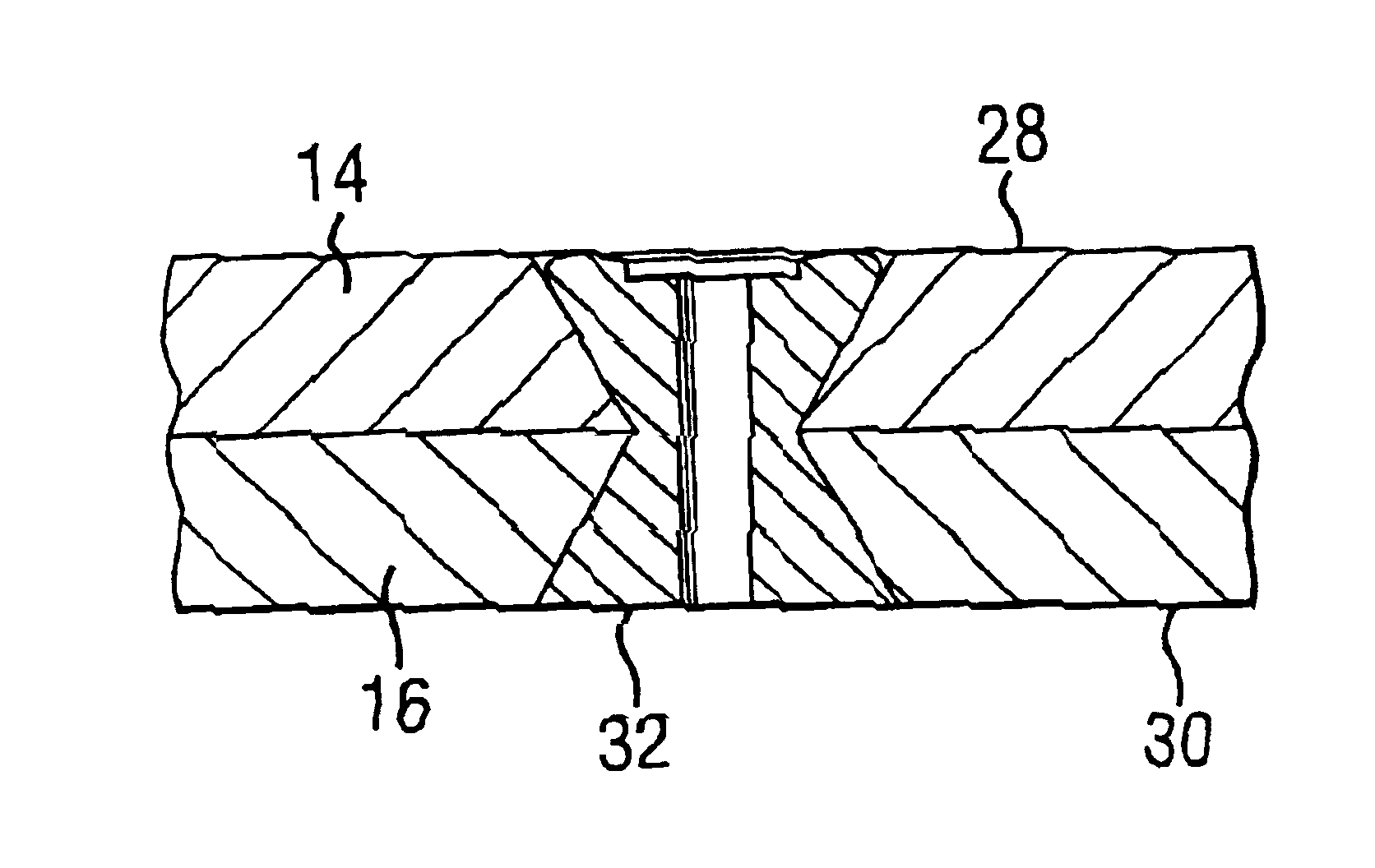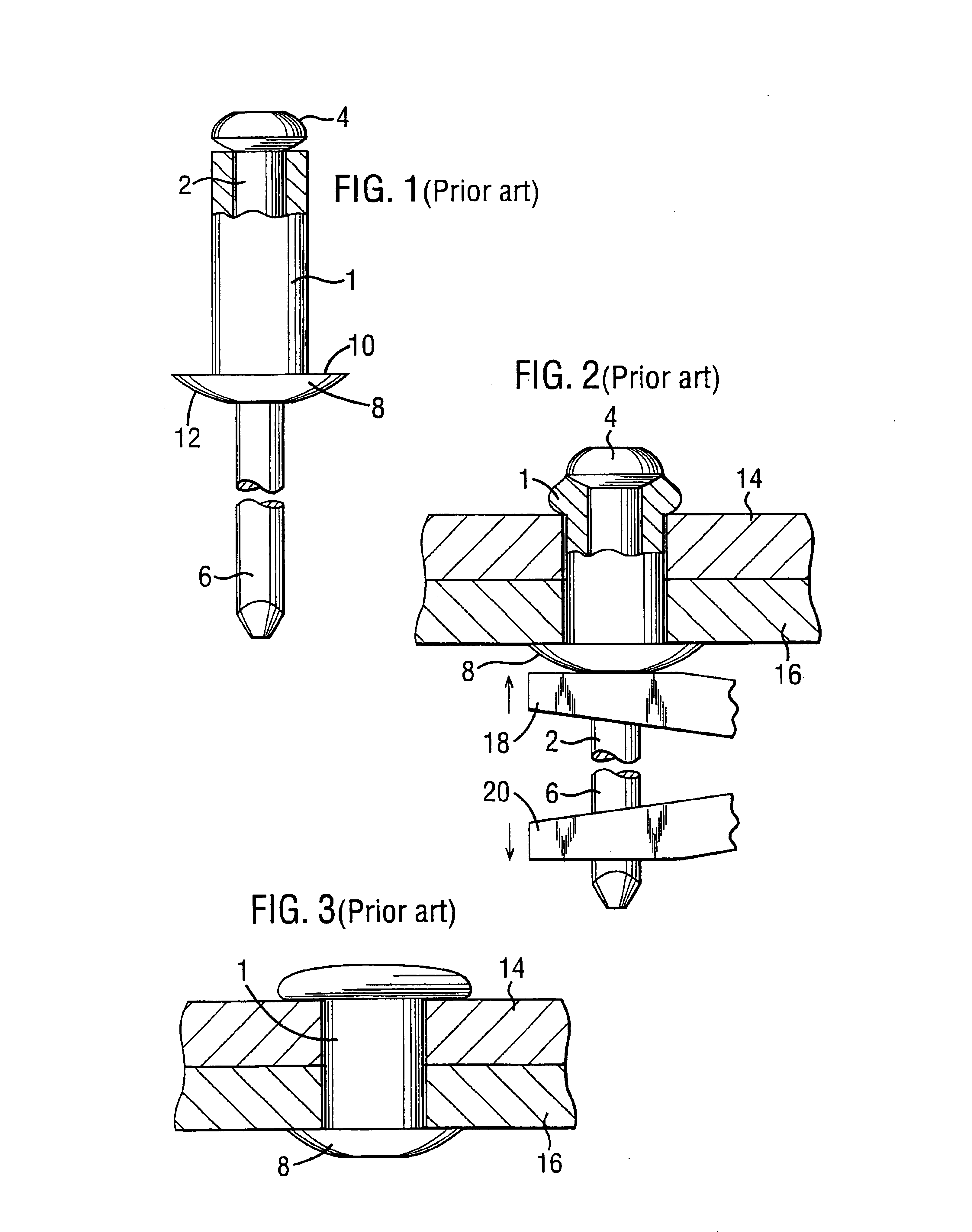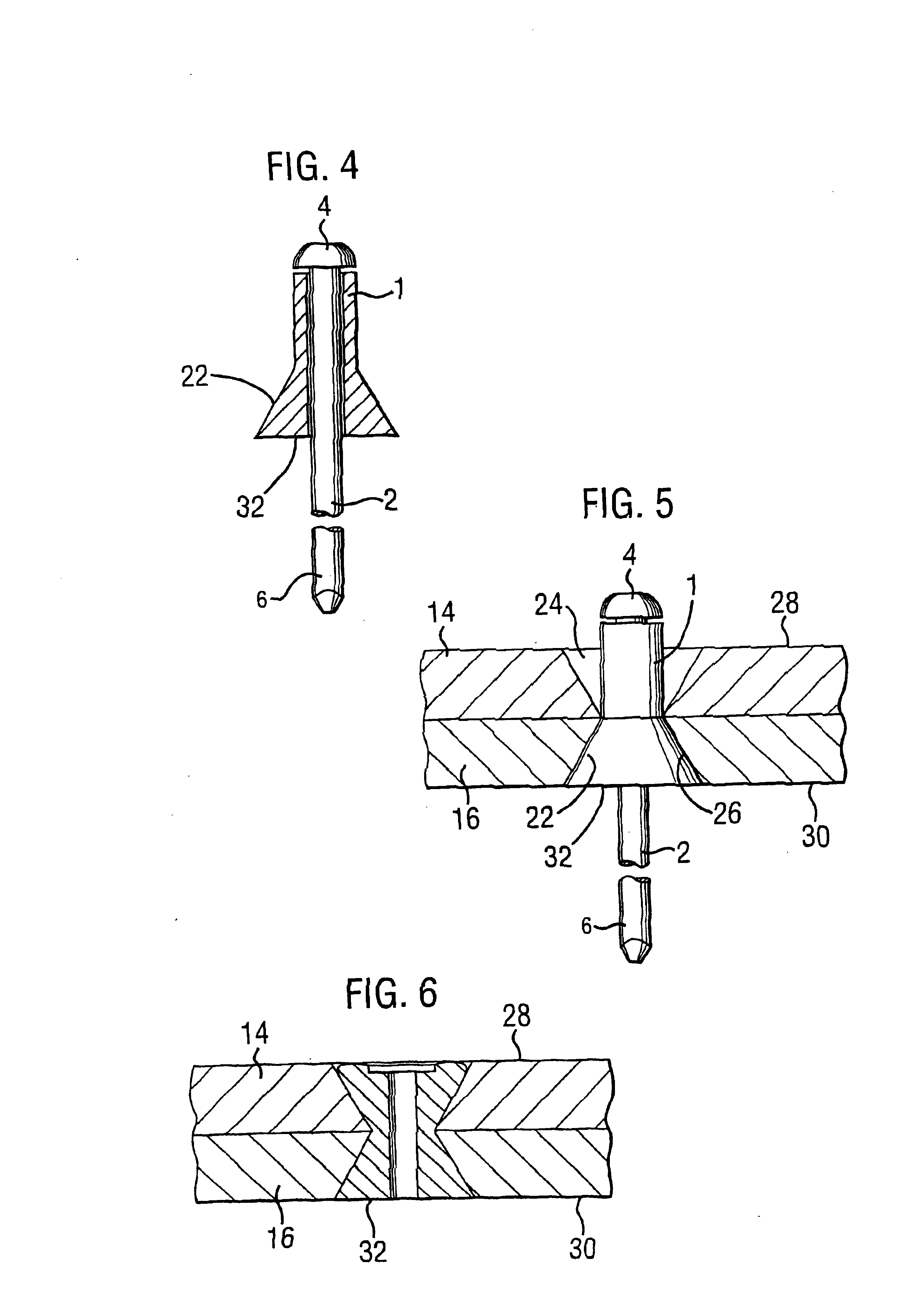Riveting method
- Summary
- Abstract
- Description
- Claims
- Application Information
AI Technical Summary
Benefits of technology
Problems solved by technology
Method used
Image
Examples
Embodiment Construction
Referring now to the drawings, in which like reference numerals are used to designate corresponding elements, FIG. 1 shows a conventional form of blind rivet. The rivet comprises a hollow sleeve 1 having a throughbore for receiving a mandrel 2 that extends through it and terminates at one end in a head 4. At its other end the mandrel extends beyond the end of the sleeve 2 and becomes a pulling stem 6 that can be gripped by a rivet setting tool. At the end opposite the mandrel head 4, the sleeve 1 has a radially extending flange 8 having a flat inwardly facing surface 10 and a slightly domed outwardly facing surface 12.
In operation, in order to form a rivet joint between metal sheets 14 and 16, the rivet is inserted into a hole that has been drilled through the sheets starting with the head 4 of the mandrel until the surface 10 of the flange 8 abuts the outwardly facing surface of the sheet 16. The rivet is then set by means of a setting tool having a pair of jaws 18 and 20. One of t...
PUM
| Property | Measurement | Unit |
|---|---|---|
| Force | aaaaa | aaaaa |
Abstract
Description
Claims
Application Information
 Login to View More
Login to View More - R&D
- Intellectual Property
- Life Sciences
- Materials
- Tech Scout
- Unparalleled Data Quality
- Higher Quality Content
- 60% Fewer Hallucinations
Browse by: Latest US Patents, China's latest patents, Technical Efficacy Thesaurus, Application Domain, Technology Topic, Popular Technical Reports.
© 2025 PatSnap. All rights reserved.Legal|Privacy policy|Modern Slavery Act Transparency Statement|Sitemap|About US| Contact US: help@patsnap.com



